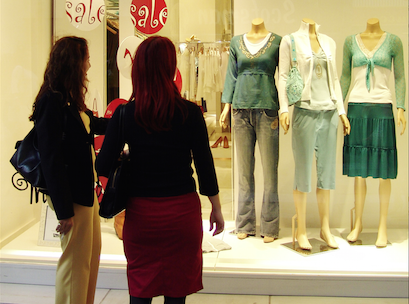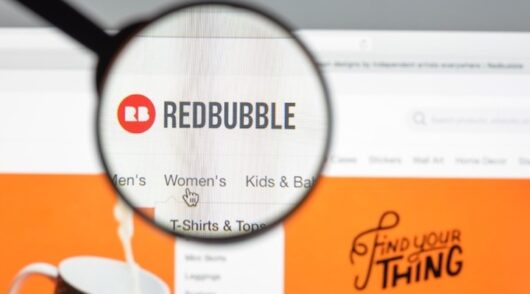 The recent April trade figures surprised retailers with the strongest headline result in almost three years, a welcome development for a sector that was facing its slowest annual growth rate in four years.
The recent April trade figures surprised retailers with the strongest headline result in almost three years, a welcome development for a sector that was facing its slowest annual growth rate in four years.
But as retailers begin the deep dive into winter discounting, experts are warning that the one per cent rise in April trade was adversely affected by seasonality and is not indicative of an underlying turnaround for the industry.
Commonwealth Bank senior economist Savanth Sebastian believes the result is likely an outlier, driven by the fact that Easter fell within the April trading period this year, making it difficult for the Australian Bureau of Statistics data to wash out seasonality.
He told IRW that the holiday played a “significant part” in the result, noting that underlying factors contributing to previous weakness in the sector remain largely unchanged.
“You’d expect the ABS statistics to wash out seasonality, but it doesn’t appear to have done that to an extent,“ he said. “It was a great result, but I wouldn’t be putting too much behind it in terms of momentum.”
Liquor retailing rose 3.6 per cent in April, the strongest in six years, alongside a 1.2 per cent increase in food retailing, supporting the notion that consumers were stocking up for the Easter break.
The annual growth rate to April has now risen to 3.1 per cent, but after March trade’s 0.2 per cent decline (which prompted warnings that the sector may be headed for recession), figures for the start of Q2 will be watched closely by the sector.
If Q1 is anything to go by, retailers will be in for a tough time, with National Australia Bank data for the first four months of 2017 outlining a 1.1 per cent decline in consumer spending year-on-year.
The data, which was released last week and is based on over four million transactions, warned that spending on accommodation and food services is comfortably outpacing retail trade as a key contributor to overall spending growth.
Discounting “isn’t going anywhere”
It’s no surprise then that the beginning of the winter trading period is already being hotly contested by retailers looking to move volume by stepping into heavily promotional strategies.
Both Myer and David Jones kicked off clearance activity last week, notably earlier than previous years. Myer has taken 40 per cent off selected clothing lines, including brands like Seed, Country Road and Saba, and 60 per cent off small appliance brands like Tefal.
David Jones is halving the price on some clothing and accessories and dropping prices on homewares by up to 40 per cent.
But the two big department stores aren’t the only retailers discounting. Specialty retailers like Country Road, Portmans, Marcs and David Lawrence have all been dropping prices throughout April.
Bricks-and-mortar retailers are also joined by online players in the rush to capitalise on tight-zipped wallets, as Australia’s most-visited e-commerce website prepared for record sales in June.
Ebay has embarked on an unprecedented discounting strategy this year, slashing prices on fashion, technology and homewares from 20 per cent to as much as 75 per cent.
The online marketplace is working with retail partners like Glue, Rebel, Shaver Shop, Grays Online, Sheridan and Adairs to discount over 68,000 items from the first of June – adding a further 10 per cent off everything on eBay.
Ebay said June sales have grown at 28 per cent in the last five years, predicting that a record $25 million to be spent on more than 12.5 million items over the month this year.
Ebay spokesperson Megan English told IRW that the company has had its strongest ever start to the month so far, with 93 retail partners having already committed to 20 per cent off their entire inventory.
“There have been tens of thousands of customers using the coupons already and there is a lot of buzz in the community about what to expect over the next four weeks,” English said.
End-of-financial-year sales are a staple on the retail calendar, but as retail CEOs across the sector routinely warn of the affect systemic discounting has had on profitability, there are concerns that gross margins will be even further compressed heading into full-year results.
Despite the impact of heavy discounting on earnings, English said the promotional period has been accepted readily by ebay’s partners and will see particularly strong results for technology and home improvement products.
“Discounting isn’t going anywhere, so we work with our retailers to make their sales work harder for them,” English said.
Ebay is betting that shoppers will be more likely to take part in the highly anticipated promotional period online, similar to consumer behaviour over the Black Friday and Cyber Monday weekend last year, which was considered by analysts as a factor affecting in-store Christmas and Boxing Day sales.
It’s attributed the behaviour to what it calls ‘buy-bernation’, which, according to a YouGov survey of 1,000 that Ebay commissioned, will see 63 per cent of shoppers choosing to stay in over winter and a further 42 per cent opting to buy big online.
Myer is also betting on online shoppers, calling its six second Youtube flash sales as a part of its strategy this year.
A strong result for online retail could turn around slowing internet sales, which last month contracted by 0.8 per cent, according to NAB data. Year-on-year online sales growth contracted over the first quarter, moving from 9 per cent in March to 6.9 per cent in April.
While Sebastian believes slow wage growth and high household debt will continue to restrain spending past June, he did acknowledge optimism amongst consumers and the likelihood that June trade volumes are likely to be strong.
But while tighter wallets may incentivise customers to take advantage of June promotions, the so-called ‘promotional fatigue’, which was outlined by retail executives and analysts in January and February, could once again rear its head.





